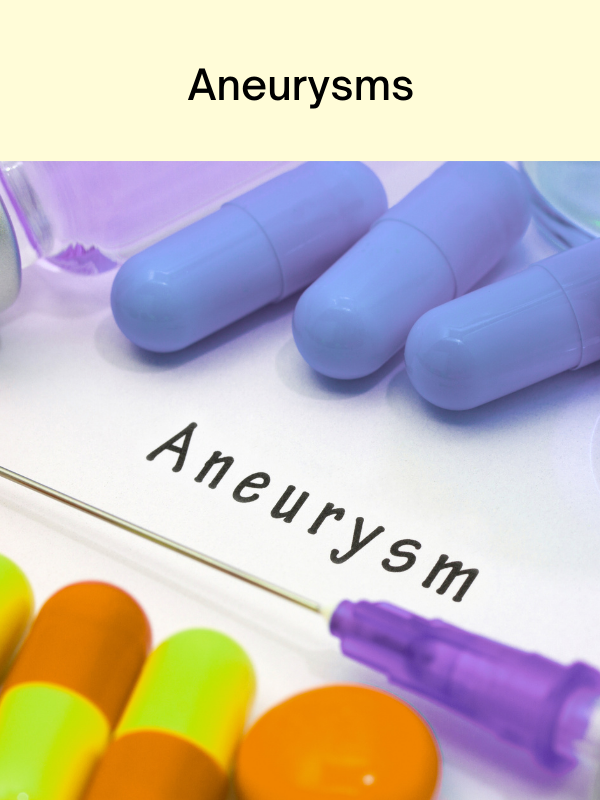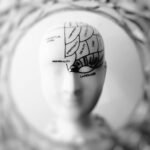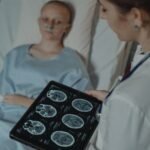Table of Contents
Neurological Disorders
- How Cerebral Hypoxia can lead to brain damage?
- Bipolar Disorder
- Mononeuropathy
- Poliomyelitis
- Neurodegenerative disorders
- Huntington’s disease (HD)
- Cerebral edema
- Migraine
- Brain Hemorrhage
- Epilepsy
- Polyneuropathy
- Encephalitis
- Increased Intracranial Pressure
- Types of Brain Tumors You Should Know About
- Brain Stroke: Symptoms, Diagnosis and Treatment
An aneurysm is a medical condition characterized by the weakening and bulging of an artery or blood vessel wall. Aneurysms can occur in various body parts but are most commonly found in the aorta and brain. Aneurysms can be dangerous and potentially life-threatening if they rupture or burst.
What causes Aneurysms?
There can be a variety of factors, including:
- High blood pressure (hypertension)
- Atherosclerosis (the buildup of plaque in arteries)
- Trauma or injury to blood vessels
- Infections in the arterial wall
- Genetic factors (some individuals may have a family history of aneurysms)
- Smoking and other lifestyle factors
The main concern is the risk of rupture. A ruptured aneurysm can lead to severe internal bleeding, which can be life-threatening. Symptoms of a ruptured aneurysm can include sudden and severe pain, dizziness, loss of consciousness, and other neurological symptoms, depending on the location of the aneurysm. Know the Diagnosis of Neurological Disorders
Types of aneurysms
There are different types, including:
Cerebral Aneurysms:
These occur in blood vessels in the brain and are often referred to as intracranial aneurysms. They can be small and go unnoticed or grow more prominent and put pressure on surrounding brain tissue. A ruptured cerebral aneurysm can lead to a subarachnoid haemorrhage, a type of stroke that can be life-threatening.
What causes Cerebral Aneurysms (Intracranial Aneurysms)?
- Sudden, severe headache (often described as the worst headache ever)
- Vision changes, such as double vision or loss of vision
- Nausea and vomiting
- Stiff neck
- Sensitivity to light (photophobia)
- Seizures
- Loss of consciousness
- Confusion or altered mental state
- Weakness or numbness in the face, arm, or leg, usually on one side of the body
- Difficulty speaking or slurred speech
Have you heard of Bell’s Palsy? Know the details
Abdominal Aortic Aneurysms (AAA)
These occur in the aorta in the abdominal region. It is a common type of aneurysm and can be asymptomatic until it reaches a critical size or ruptures, which can be fatal.
What causes Abdominal Aortic Aneurysms (AAA)?
- Most AAA cases are asymptomatic and are discovered incidentally during medical exams or imaging.
- In some cases, individuals may experience abdominal or back pain, which can be dull, constant, or throbbing.
- In the event of a rupture, sudden and severe abdominal or back pain is a medical emergency.
Thoracic Aortic Aneurysms
It occurs in the aorta as it passes through the chest. Various factors, including genetic conditions and high blood pressure, can cause them.
Most thoracic aortic aneurysms are asymptomatic. Symptoms may occur when the aneurysm presses on nearby structures, leading to chest pain, back pain, or difficulty swallowing or breathing.
Peripheral Aneurysms
These aneurysms occur in arteries outside the brain and aorta, such as in the arms or legs.
Peripheral aneurysms can cause swelling, pain, or a pulsating mass in the affected limb. There may be significant bleeding and pain in the case of a ruptured peripheral aneurysm.
Treatment
The treatment depends on several factors, including the type of aneurysm, its size, location, and whether it has ruptured or is at risk of rupturing. There are two main approaches to treating aneurysms: surgical and non-surgical. The treatment choice is determined by the individual’s overall health and the specific characteristics of the aneurysm.
- Endovascular Aneurysm Repair (EVAR): This is a minimally invasive procedure used to treat abdominal aortic aneurysms and some other types of aneurysms. During EVAR, a stent graft is inserted into the affected blood vessel through a small incision in the groin. The stent graft is guided to the aneurysm site using imaging techniques. It is deployed to seal off the aneurysm, preventing further expansion and reducing the risk of rupture.
- Endovascular Coiling: This procedure is used to treat cerebral aneurysms. A catheter is inserted into an artery, usually in the groin, and guided to the aneurysm site. Small coils or other devices are placed inside the aneurysm to block blood flow, reducing the risk of rupture.
- Medication: In some cases, medication may be prescribed to control blood pressure or reduce the risk of blood clots within the aneurysm.
- Open Surgical Repair: This involves traditional surgery to repair the aneurysm. It is often used for large aneurysms, those that have ruptured, or when endovascular repair is not feasible. During open surgical repair, the damaged section of the blood vessel is replaced with a graft (synthetic tube) to reinforce the weakened area and prevent further expansion or rupture.
- Clipping: In the case of cerebral aneurysms, a surgical procedure called clipping may be performed. It involves placing a metal clip at the aneurysm’s base to prevent blood flow.
When can one consult a doctor?
If you or someone you know experiences sudden, severe headache, chest or abdominal pain, or any other symptoms suggestive of an aneurysm, seek immediate medical attention. Timely diagnosis and treatment are crucial to prevent complications, especially in the case of a ruptured aneurysm. Screening and monitoring may also be recommended for individuals at higher risk due to factors such as family history or certain medical conditions.
How does a neurologist help in aneurysms?
Neurologists play a critical role in evaluating, diagnosing, and managing aneurysms, mainly when aneurysms are located in the brain (cerebral aneurysms). Here’s how neurologists can help in the context of aneurysms:
- Diagnosis: a neurologist may perform a comprehensive neurological examination to assess the patient’s neurological function. They will also review the patient’s medical history and order appropriate imaging studies, such as CT, MRI, or angiography, to confirm the aneurysm’s presence, location, and size.
- Risk Assessment: Neurologists can assess the individual’s risk factors for aneurysm formation or rupture. They may consider factors such as family history, genetic predisposition, high blood pressure, smoking history, and other medical conditions that could contribute to developing an aneurysm.
- Treatment Decision-Making: Neurologists work closely with other medical specialists, including neurosurgeons and interventional radiologists, to determine the most appropriate treatment strategy.
- Medical Management: Neurologists may provide medical management in cases where surgical or endovascular intervention is not immediately required. This can involve prescribing medications to control blood pressure, prevent blood clot formation, or manage symptoms related to the aneurysm.
- Preventive Measures: Neurologists may recommend lifestyle modifications and preventative measures to reduce the risk of aneurysm formation or rupture. This can include advising patients to quit smoking, manage blood pressure, and make other healthy lifestyle choices.
- Long-Term Follow-Up: After the treatment of an aneurysm or in cases where aneurysms are being monitored conservatively, neurologists often provide long-term follow-up care. This includes periodic imaging studies to track the status of the aneurysm and assess for any potential changes.
- Rehabilitation: In cases where cerebral aneurysms have caused neurological deficits, such as weakness or speech problems, neurologists may coordinate rehabilitation services to help patients recover and regain function.
- Education and Counseling: Neurologists play a role in educating patients and their families about aneurysms, treatment options, and potential risks. They also provide counselling and support to help patients make informed decisions about their care.
Points to note:
- It’s important to note that not all aneurysms require immediate treatment, especially if they are small and not at risk of rupture.
- Some smaller aneurysms may be carefully monitored through regular imaging studies to track any changes in size.
- Early detection and appropriate treatment are essential in managing aneurysms, as the risk of rupture can have severe and potentially life-threatening consequences.
- Individuals with known risk factors for aneurysms, such as a family history or certain medical conditions, should discuss screening and monitoring options with their healthcare providers.
- It’s important to note that managing cerebral aneurysms often involves a multidisciplinary team of healthcare professionals, including neurologists, neurosurgeons, interventional radiologists, and neuroradiologists, who work together to provide comprehensive care.
- Neurologists contribute their expertise in understanding the neurological aspects of the condition and play a crucial role in ensuring the best possible outcomes for patients with cerebral aneurysms.
















